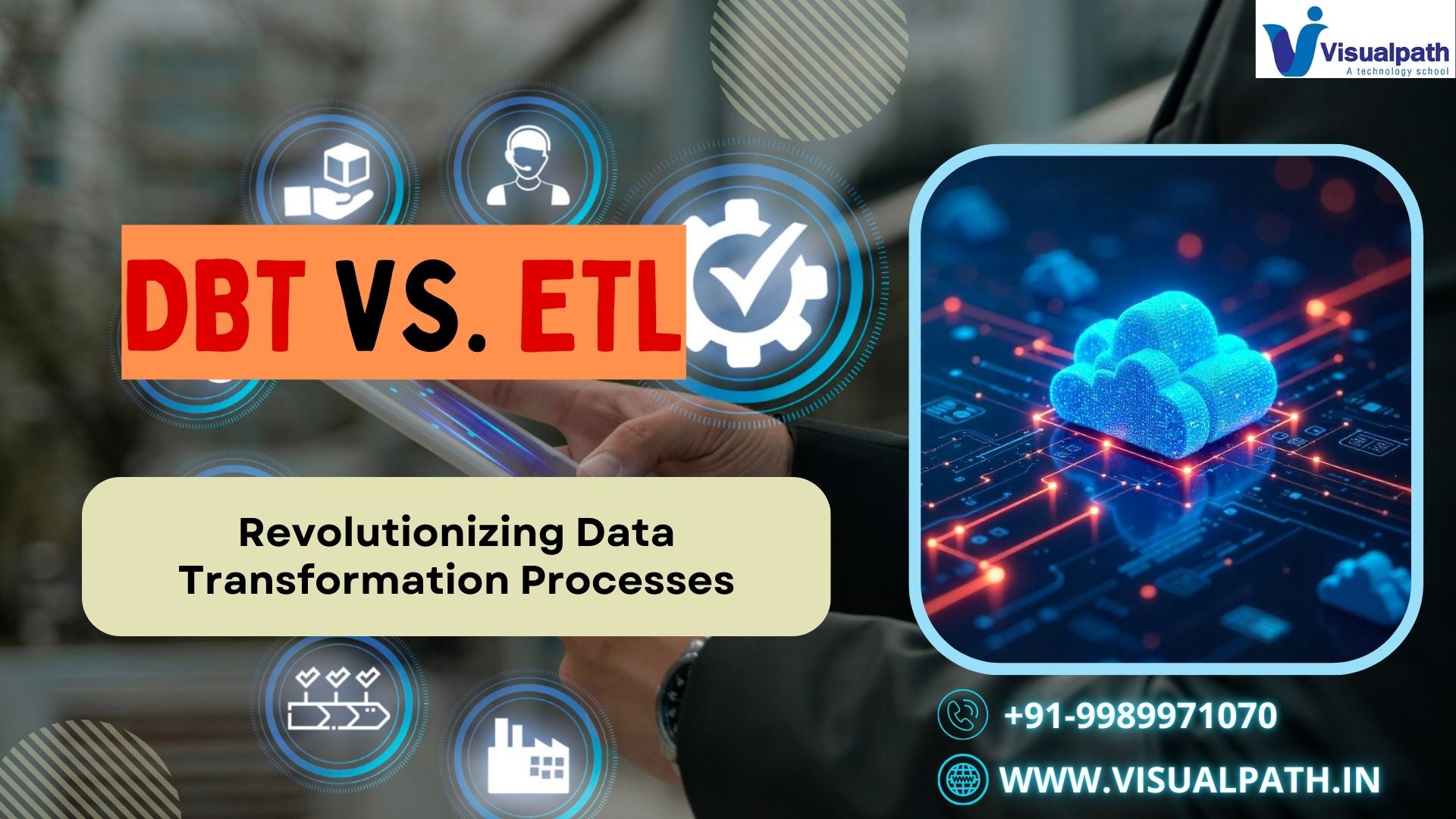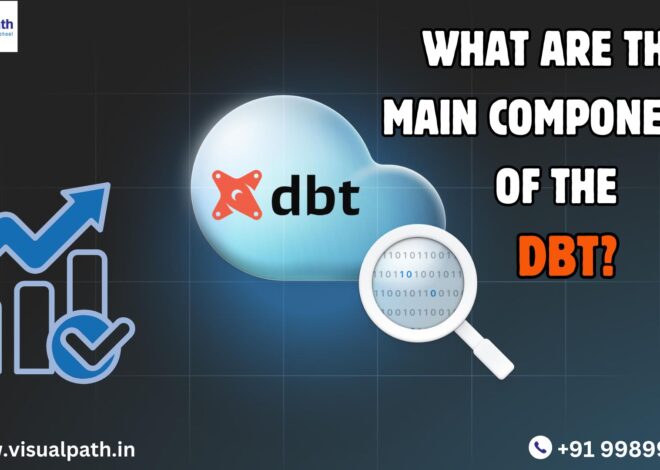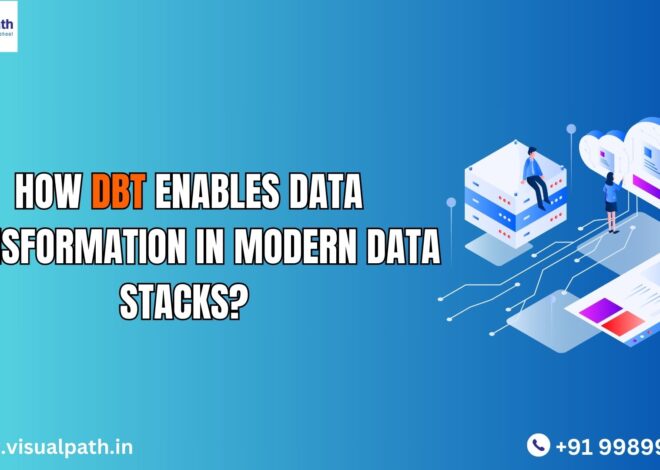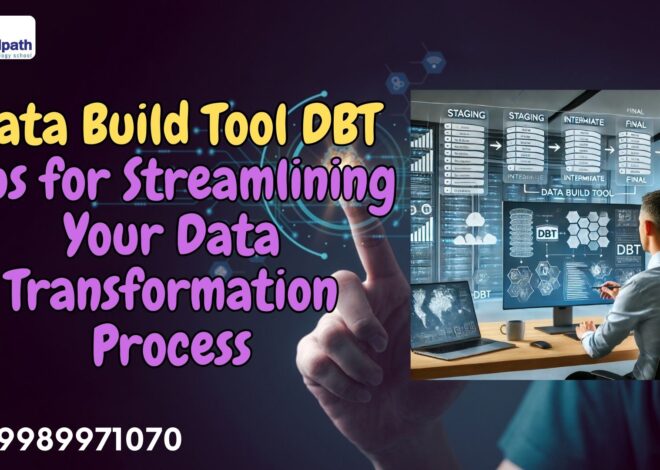Data Build Tool Training has become indispensable as businesses modernize their data workflows. With the advent of DBT (Data Build Tool), traditional ETL (Extract, Transform, Load) processes are facing challenges in keeping up with the needs of cloud-native, agile environments. DBT Online Training equips data professionals with the skills to use DBT’s SQL-based framework for efficient data transformation directly within data warehouses. This shift from ETL to DBT is not just a technological change but a revolution in data management practices.
The increasing popularity of DBT reflects its efficiency, scalability, and cost-effectiveness. Through Data Build Tool Training, professionals can understand how DBT streamlines data workflows, enabling faster, more accurate insights. This article explores the differences between DBT and ETL, their use cases, and why DBT is becoming the preferred choice for modern data teams.
Understanding ETL: The Traditional Data Transformation Process
ETL has long been the standard method for managing data transformation. It extracts data from diverse sources, transforms it in a dedicated staging environment, and then loads the processed data into the target system. This approach worked well when data pipelines were less complex and latency was not a critical issue.
However, as data volumes grew and businesses demanded real-time insights, ETL began to show its limitations. The staging environment adds significant processing time, while the infrastructure required to maintain ETL workflows can be costly. Additionally, ETL systems are often rigid and difficult to modify, making them less suited for the dynamic needs of modern organizations.
With the rise of cloud-native data warehouses, businesses are turning to tools like DBT that align better with these evolving requirements. Professionals who enroll in DBT Classes Online gain practical experience in modernizing data pipelines to meet today’s challenges.
What Makes DBT Different?
DBT introduces an ELT (Extract, Load, Transform) paradigm, where raw data is loaded directly into a data warehouse, and transformations occur within the warehouse itself. This approach leverages the computational power of cloud-native systems like Snowflake, Big Query, and Redshift.
Unlike ETL, which relies on external staging environments, DBT simplifies workflows by focusing on in-warehouse transformations. It uses SQL for all operations, making it accessible to data analysts and engineers alike. Additionally, DBT emphasizes modularity, enabling teams to create reusable components and collaborate effectively. DBT Training Courses provide in-depth guidance on mastering these features, ensuring learners are ready to implement them in real-world scenarios.
DBT vs. ETL: A Detailed Comparison
Workflow Efficiency
ETL processes involve multiple steps outside the data warehouse, increasing complexity and potential points of failure. In contrast, DBT eliminates the need for external staging environments, streamlining workflows and reducing latency.
Cost Implications
ETL systems often require expensive infrastructure for processing and storage. DBT minimizes costs by using the existing computational resources of data warehouses. This makes it an ideal solution for businesses looking to optimize their budgets while maintaining high performance.
Flexibility and Scalability
ETL tools are often proprietary and rigid, making it difficult to adapt to new requirements. DBT’s open-source nature and modular design provide unparalleled flexibility, allowing it to scale seamlessly with the needs of any organization.
Accessibility
DBT’s SQL-based approach lowers the barrier to entry, enabling broader teams to participate in data transformation tasks. With Best Online DBT Courses, even those new to SQL can quickly grasp DBT’s functionalities and contribute to data projects.
By enrolling in DBT Certification Training Online, professionals can gain a deeper understanding of these differences and how to leverage DBT’s advantages effectively.
Why Businesses Are Choosing DBT
DBT’s in-warehouse transformation capabilities make it particularly attractive to organizations striving for efficiency and speed. Its ability to deliver analytics-ready data in real time enables faster decision-making, a critical advantage in industries like retail and finance.
DBT also supports automation and testing, ensuring data quality without additional manual effort. This not only improves accuracy but also reduces operational overhead. Businesses that adopt DBT benefit from its cost-effective and scalable architecture, which aligns perfectly with modern cloud-based systems. Professionals trained through DBT Classes Online can help organizations unlock these benefits, driving innovation and efficiency
Use Cases for DBT across Industries
DBT’s versatility makes it applicable across a range of industries, from retail and finance to healthcare and technology.
In the retail sector, DBT supports real-time analytics for sales trends, inventory management, and customer behaviour, helping businesses make data-driven decisions faster. Finance teams use DBT to streamline reporting workflows, improve data accuracy, and ensure compliance with regulatory requirements.
Healthcare providers leverage DBT to manage patient data, optimize operational efficiency, and enhance decision-making. In the technology sector, DBT is instrumental in scaling data infrastructure and enabling advanced analytics. These applications demonstrate DBT’s broad appeal, making it a critical skill for data professionals. By enrolling in DBT Online Training, learners can explore these use cases and understand how to implement DBT effectively.
Learning DBT: Training and Certification Opportunities
To fully utilize DBT, professionals need proper training and certification. DBT Classes Online provide an accessible starting point, offering hands-on experience with DBT’s tools and workflows. These classes are ideal for beginners looking to build foundational skills.
For those seeking a deeper understanding, DBT Training Courses cover advanced features, project management techniques, and best practices for scaling DBT implementations. These courses ensure learners are prepared to tackle real-world challenges.
Certification programs, such as DBT Certification Training Online, validate expertise and demonstrate proficiency to employers. Certified professionals are better positioned to secure roles in data-driven organizations and advance their careers.
By choosing the Best Online DBT Courses, learners can combine expert instruction with practical applications, ensuring they gain industry-relevant skills.
Conclusion
The rise of DBT represents a paradigm shift in data transformation processes. By transitioning from ETL to DBT, organizations can achieve greater efficiency, scalability, and cost savings. DBT’s SQL-driven, in-warehouse transformation approach addresses the limitations of traditional ETL, making it a vital tool for modern data teams.
Through Data Build Tool Training and DBT Online Training, professionals can master the skills needed to implement DBT successfully. These programs offer comprehensive insights into DBT’s features, workflows, and applications, ensuring learners are well-prepared to meet industry demands.
Whether you are a data analyst, engineer, or decision-maker, learning DBT is an investment in the future. With resources like DBT Training Courses, Best Online DBT Courses, and DBT Certification Training Online, you can gain the knowledge and credentials to thrive in today’s data-driven world.
DBT is not just a replacement for ETL—it is a revolution in how data is managed, analyzed, and leveraged for business success. By embracing DBT, professionals and organizations alike can stay ahead in an ever-evolving technological landscape.
Visualpath is the Leading and Best Institute for learning in Hyderabad. We provide DBT Certification Training Online. You will get the best course at an affordable cost.
Attend Free Demo
Call on – +91-9989971070
What’s App: https://www.whatsapp.com/catalog/919989971070/
Visit: https://www.visualpath.in/online-data-build-tool-training.html




